

Fw 189A-2

In 1937 the RLM issued a specification for a tactical reconnaissance aircraft carrying three crew members, offering all around defensive cover and possessing a higher performance than anything previous in this category. The Fw 189 was Kurt Tank's answer to that specification. The prototype flew in July of 1938, 15 months after an order was placed for prototypes. After testing had been completed production orders were received for the A-1 model. Armament consisted of 2 MG 17 machine guns in the wing roots and 2 MG 15 machine guns on flexible mounts. Racks were provided under the wings for 110-lb bombs. The A-1 was succeeded on the production lines by the A-2 in mid 1941 which differed from the A-1 in having twin machine guns in the two flexible positions. Used predominately on the Eastern front, "The flying Eye" was to prove to be supremely versatile, universally popular with its pilots and one of the most reliable aircraft ever to see Luftwaffe service. A few were even fitted with radar and used as night fighters on the Eastern front.
The Kit
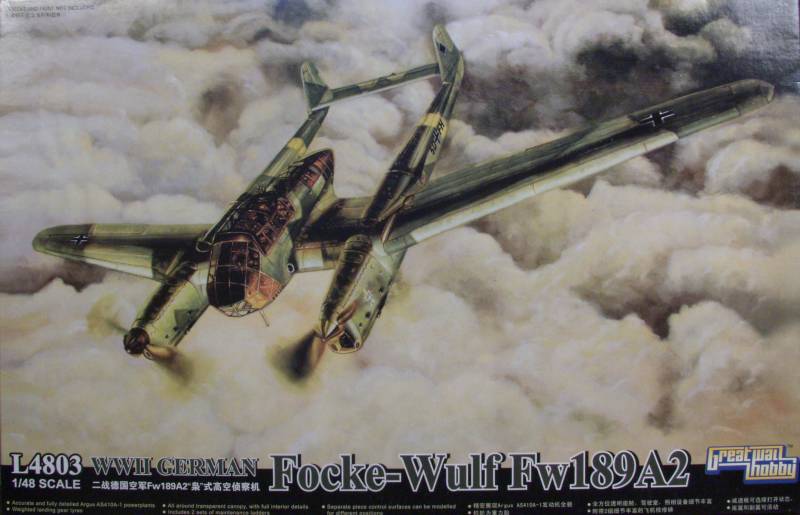
The Great Wall Fw 189 comes in a medium sized top
open tray type box with nice artwork on the top. Inside the box we find
three large individually bagged sprues and two smaller sprues bagged
together. All are molded in sort of a gray green color. The bags are
all resealable and the two smaller sprues are both the same containing
all the smaller parts of which two are required. The clear parts sprue
was bagged separately and wrapped in foam. Also included in the box is
a packet containing masks for the clear parts, the decals and a photo
etch fret. The parts are well molded with no sign of flash. Surface
detail consists of finely engraved lines and some raised detail where
applicable. The control surfaces are all molded separately including
the flaps. The fabric representation is a bit over done for my tastes
but are not that different than found on many other kits. I did find
some ejector pin marks on the inside of the flaps, in the gear wells
and the insides of the engine cover panels. I did not find any surface
defects on any of the airframe parts. Lets take a look at the sprues.
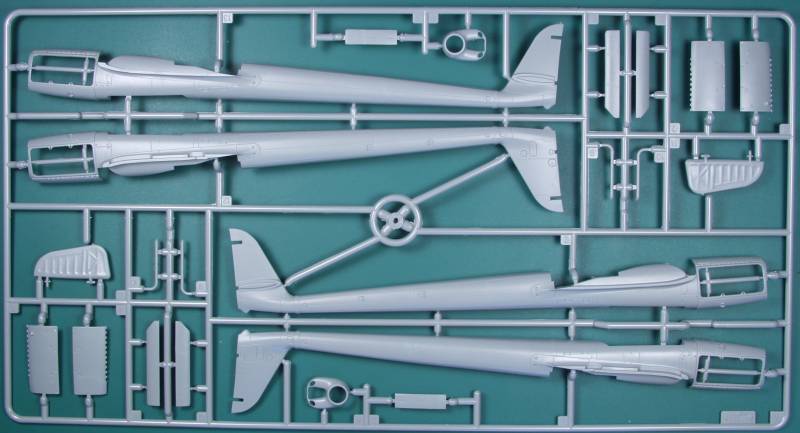
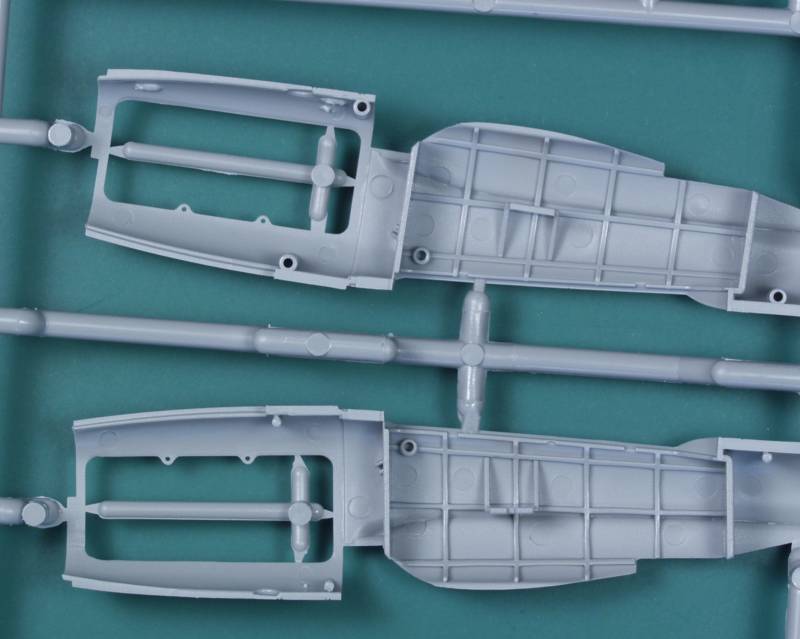
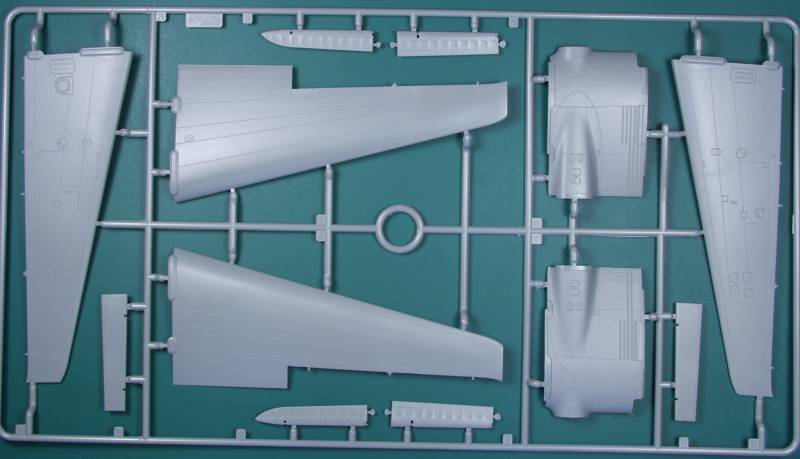
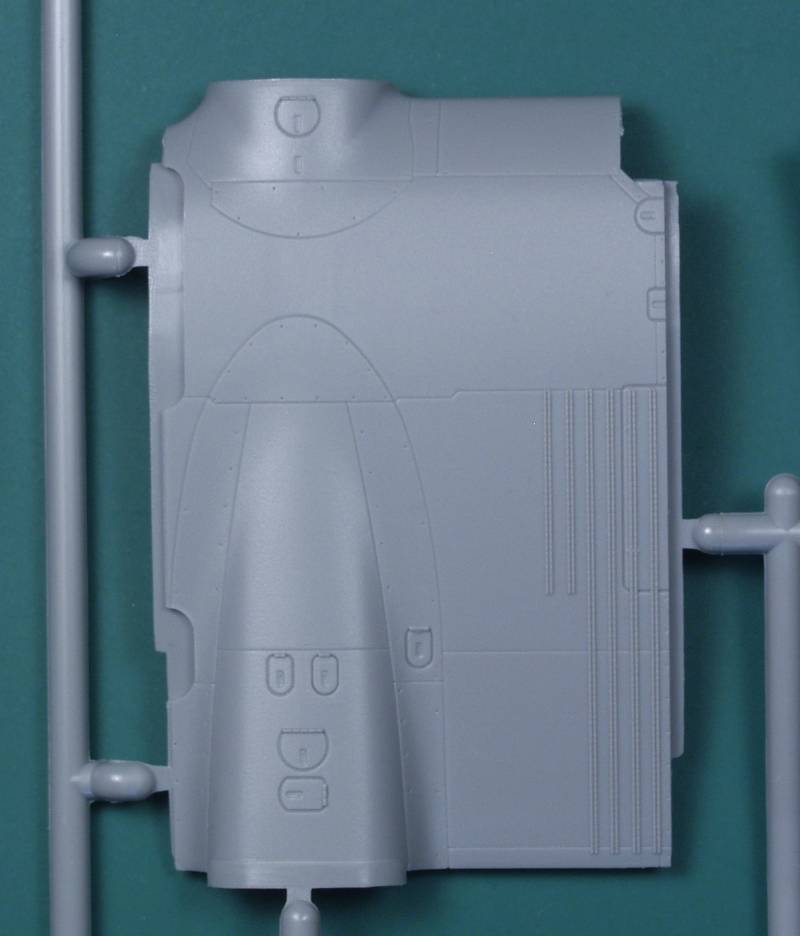
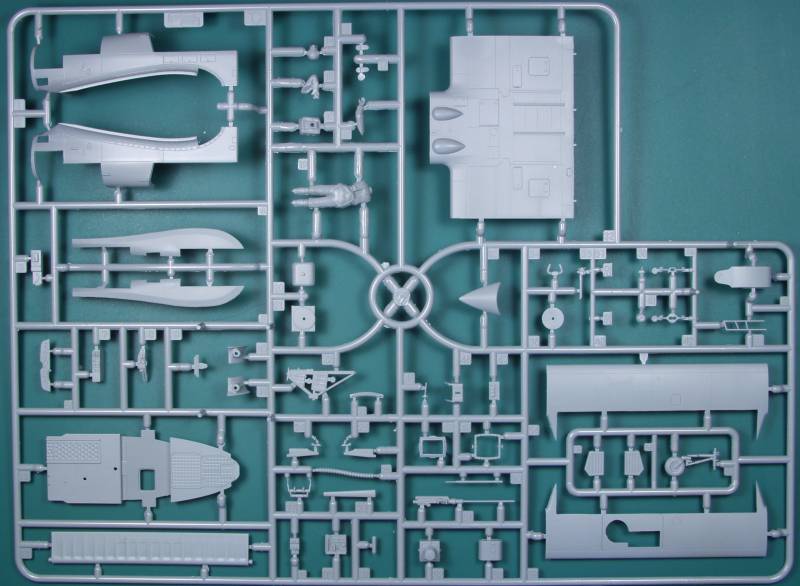
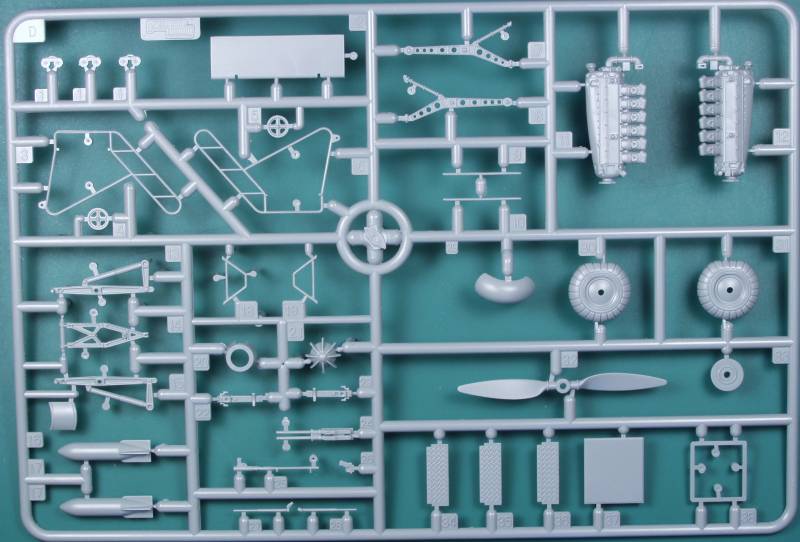
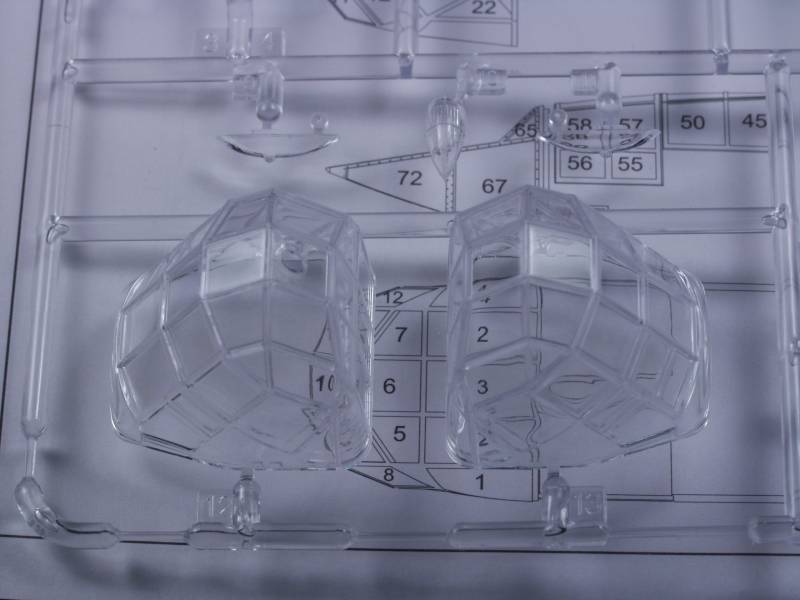
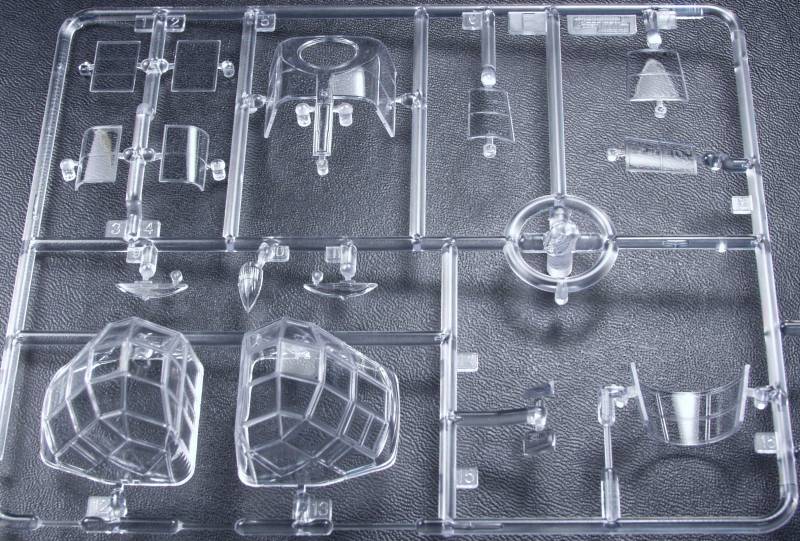
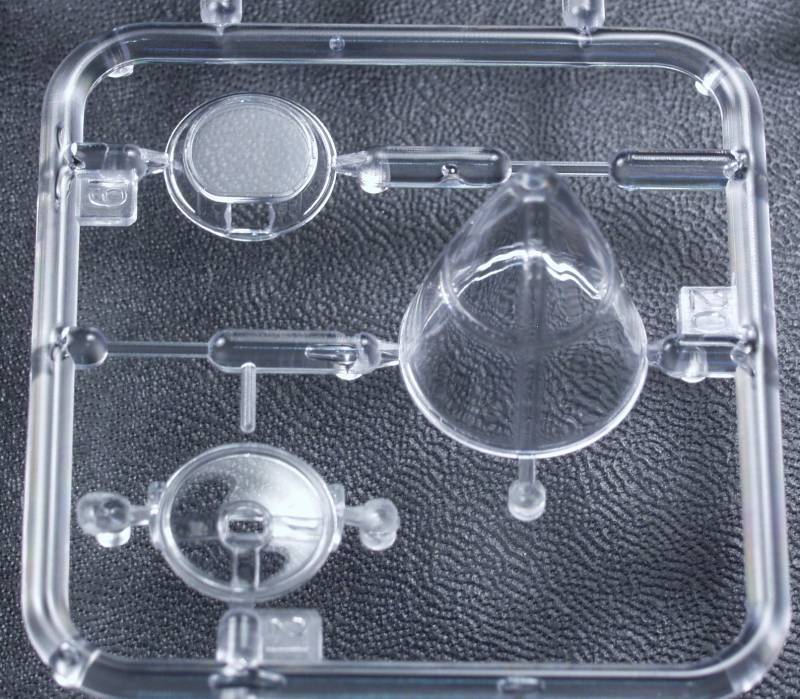
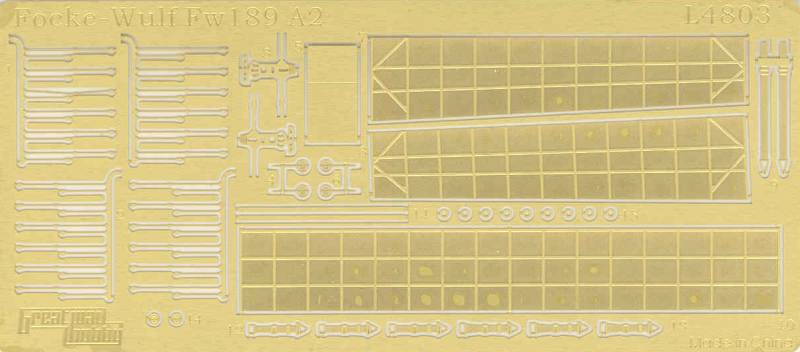
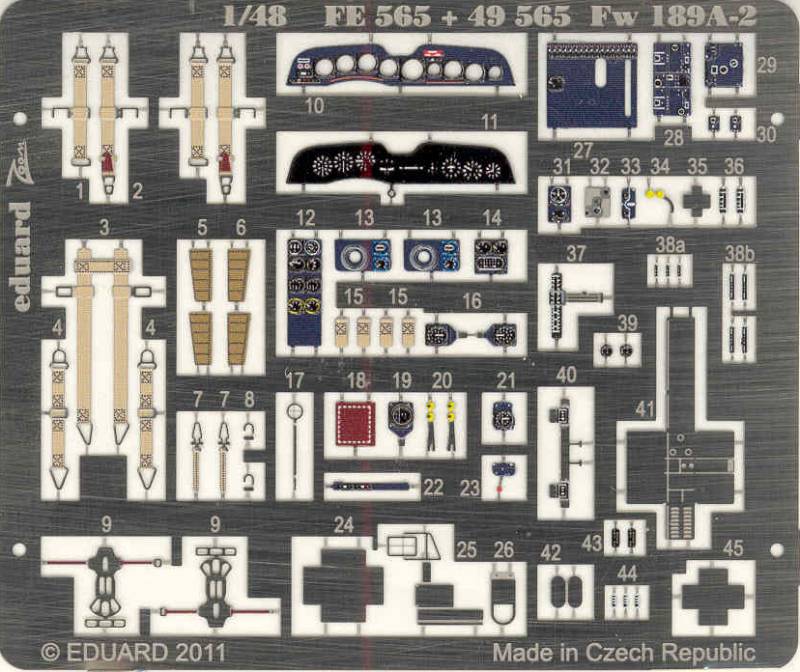
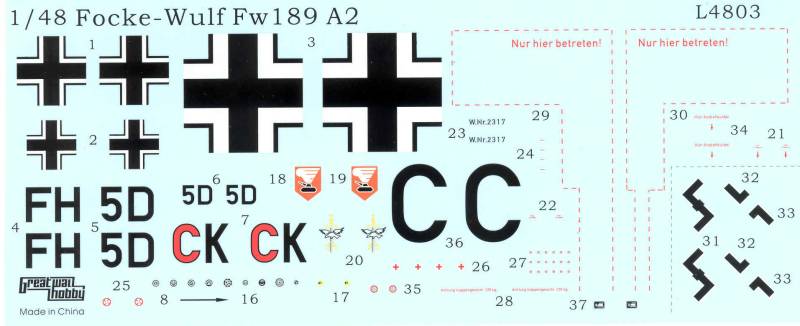
Conclusions
This was Great Wall's first foray into aircraft after
building quite a good reputation for their armor kits. When it was
first released a couple of years ago the accuracy Nazi's beat it up a
bit because the booms should not be as slab sided as the model and
should have a subtle bulge near the center of the boom. If this sort of
thing bothers you it is not hard to fix but does require as bit of
filling and sanding, neither of which are favorites of mine. Quite
honestly the extra work wouldn't be worth it to me as I really don't
have the eye for minor shape errors. From all that I have found most
report that the kit is a relatively easy build with only some very
minor fit issues. The only other kit in this scale is the limited run
kit from MPM which is a much more laborious build and a review of it
can be found here. Needless to say this kit
would be a much better choice and would recommend it to modelers of all
but beginner level.
Links to kit build or reviews
A review / build can be found here.
References
"Warplanes of the Third Reich" by William Green
Updated 9/1/14